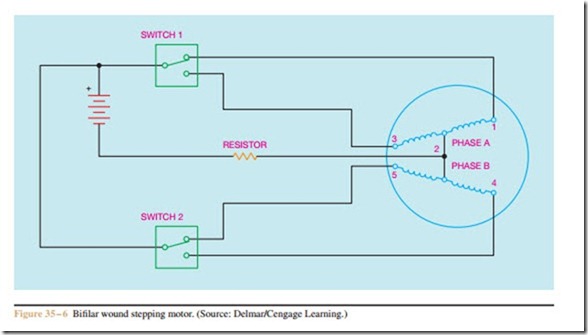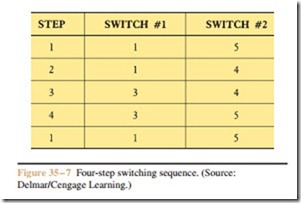Four-Step Switching (Full Stepping)
The switching arrangement shown in Figure 35 – 6 can be used for a four-step sequence. Each time one of the switches changes position, the rotor will advance one- fourth of a tooth. After four steps, the rotor has turned the angular rotation of one “full” tooth. If the rotor and stator have fifty teeth, it will require 200 steps for the motor to rotate one full revolution. This corresponds to an angular rotation of 1.8 degree per step. (360°/200 steps = 1.8° per step.) Figure 35 – 7 illustrates the switch positions for each step.
Related posts:
Hazardous Materials:Classification Of hazardous Materials
DC Circuits:Parallel Circuits
summary of Waveshaping Circuits
Digital Audio Recording Basics:An Open Reel Digital Recorder
AUDIO AND VIDEO SYSTEMS - LOUDSPEAKERS
Integrated Circuits:Integrated circuit Packaging
Electric Motor Manual – INSTALLATION METHODS – Fire pumps and controllers
Troubleshooting AC motors and starters:Motor failures and methods to extend its life
Data Compression:Lossless Compression
LEARNING ABOUT ELECTRONICS FOR YOUR OWN GOOD:THE PAINFUL TRUTH
Sleeve Bearings
Special machines:Variable Reluctance Stepper Motors
VIBRATION ANALYSIS:VIBRATION SEVERITY
ELECTRIC MOTORS:TORQUE PRODUCTION

